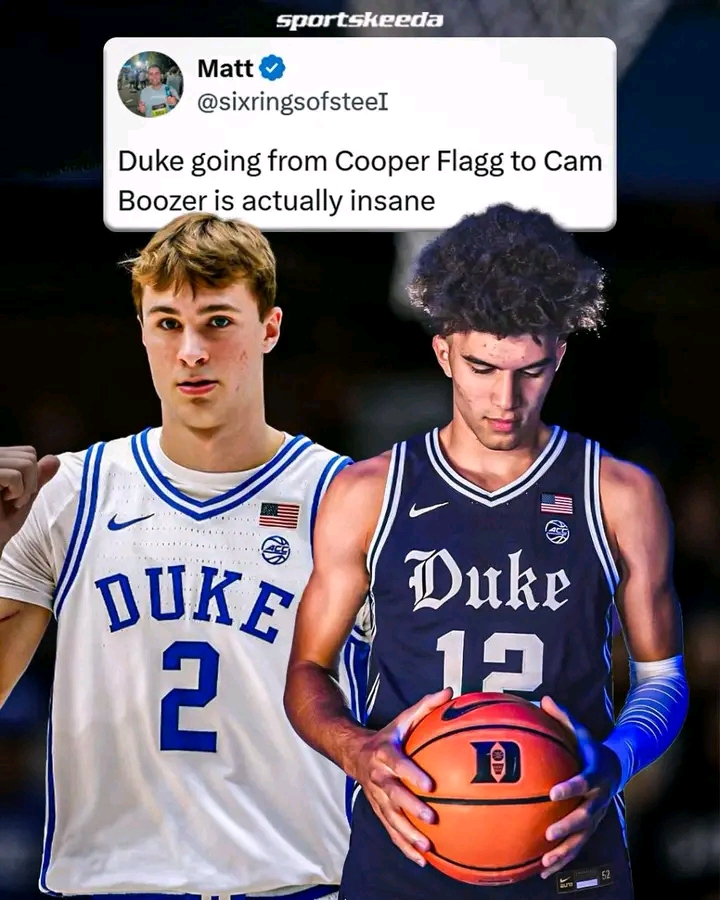Duke Just Played the Portal Like a Pro—And the ACC Is Shook
The Blue Devils are building a basketball powerhouse once again—and the 2025–26 season might be their most exciting yet under Jon Scheyer.
Following Cooper Flagg’s departure to the NBA, many wondered how Duke would fill such massive shoes. The answer? A monster recruiting class headlined by five-star phenom Jaylen Harrell, dynamic point guard Micah Simmons, and a game-changing transfer portal haul that has shaken the foundation of the ACC.
When Flagg declared for the NBA after a dazzling freshman season, skepticism brewed around whether Duke could reload quickly enough to stay among the nation’s elite. Instead of retreating, head coach Jon Scheyer went on the offensive. The result: a stunning blend of elite freshmen and proven veterans that has analysts buzzing and rival programs scrambling.
Harrell, a 6-foot-8 wing with pro-ready scoring instincts and defensive versatility, is the gem of Duke’s 2025 class. Ranked No. 2 in the nation by most services, Harrell committed to Duke over Kentucky, Kansas, and Alabama. His game blends silky jump shooting with above-the-rim athleticism and a high motor. More than just a stat sheet stuffer, Harrell has already earned praise from Duke insiders for his leadership and work ethic.
Alongside him is Micah Simmons, a lightning-quick 6-foot-2 point guard from Chicago who’s drawn comparisons to a young De’Aaron Fox. Simmons thrives in transition and has shown flashes of elite court vision, making him the ideal orchestrator for a Scheyer offense that emphasizes tempo and spacing. With Simmons at the helm, Duke’s offense projects to be both fast and fluid.
But the recruiting wins didn’t stop with high school seniors. Scheyer took full advantage of the transfer portal, landing three battle-tested players: Caleb Johnson, a sharpshooting guard from Utah; Malik Rodgers, a 6-foot-10 stretch forward from Texas Tech; and Jamari Williams, a rugged, do-it-all wing from UConn. Each brings experience, toughness, and a hunger to win.
Johnson adds deadly perimeter shooting, having hit 41% of his threes last season in the Pac-12. Rodgers offers frontcourt depth and spacing, a crucial component given Duke’s sometimes inconsistent interior scoring. Williams, fresh off a Final Four run with UConn, brings championship pedigree and the kind of defensive grit that Scheyer covets.
What makes this Duke team different isn’t just talent—it’s balance. Past Blue Devil teams have sometimes leaned too heavily on youth or lacked cohesion. But the 2025–26 roster combines explosive freshmen with savvy veterans, all under the guidance of a head coach who’s quickly silencing doubters.
Scheyer, once in Mike Krzyzewski’s immense shadow, is now fully stepping into his own as a program builder. He’s adapted to the new era of college basketball—one where NIL, transfers, and recruiting dynamics change yearly. His ability to mix portal pickups with five-star talent mirrors what powerhouses like UConn and Houston have done in recent years. The result: a Duke team that is deeper, tougher, and more mature than any he’s fielded yet.
The ACC is on notice. North Carolina, Virginia, and Miami have all had strong offseasons, but Duke’s moves have eclipsed them. The Blue Devils are not just reloading—they’re aiming for dominance.
As the 2025–26 season approaches, expectations in Durham are sky-high. Cameron Indoor Stadium will once again be the epicenter of college hoops, with a squad that looks poised for a Final Four run. Cooper Flagg may be gone—but if this offseason proved anything, it’s that Duke never stays down for long. The Blue Devils are back, and the rest of college basketball better be ready.

